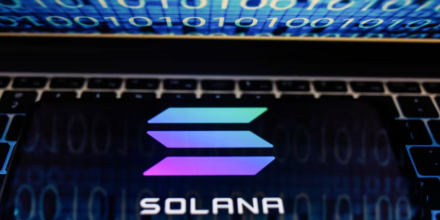The rate cut illusion is shattered, the AI bubble is shaking, and Bitcoin leads the decline: this round of plunge is not a black swan, but a systemic stampede.
Global markets experienced a systemic decline, with U.S. stocks, Hong Kong stocks, A-shares, bitcoin, and gold all falling simultaneously. The main reasons were a reversal in Federal Reserve rate cut expectations and Nvidia's positive earnings failing to boost prices. Summary generated by Mars AI. This summary is produced by the Mars AI model, and the accuracy and completeness of its content are still being iteratively improved.
November 21, Black Friday.
US stocks plunged, Hong Kong stocks tumbled, A-shares fell in tandem, and Bitcoin once dropped below $86,000. Even the safe-haven gold continued to decline.
All risk assets seemed to be pressed down by the same invisible hand, collapsing simultaneously.
This is not a crisis of a single asset, but a systemic, synchronized downturn in global markets. What exactly happened?
Global Crash: Who Suffers Most?
After experiencing "Black Monday," US stocks suffered another sharp drop.
The Nasdaq 100 index plunged nearly 5% from its intraday high and finally closed down 2.4%, expanding its pullback from the record high set on October 29 to 7.9%. Nvidia's stock price went from rising more than 5% to closing in the red, and $2 trillion evaporated from the market overnight.
Across the ocean, Hong Kong and A-shares were not spared.
The Hang Seng Index fell 2.3%, the Shanghai Composite Index broke below 3,900 points, with a decline of nearly 2%.
Of course, the crypto market suffered the most.
Bitcoin fell below $86,000, Ethereum dropped below $2,800, and over 245,000 people were liquidated in 24 hours, with $930 million wiped out.
From the October high of $126,000, Bitcoin started to decline and once broke below $90,000, erasing all gains since 2025 and falling 9% from the beginning of the year. A wave of panic began to spread in the market.
Even more alarming, gold, which serves as a "hedge" for risk assets, also failed to hold up, dropping 0.5% on November 21 and hovering around $4,000 per ounce.
Who Is to Blame?
The Federal Reserve is the first to be blamed.
For the past two months, the market has been immersed in expectations of a "rate cut in December," but the Fed's sudden shift in stance was like a bucket of cold water poured over all risk assets.
In recent speeches, several Fed officials collectively adopted a rare hawkish tone: inflation is falling slowly, the labor market remains resilient, and further tightening is not ruled out if necessary.
This is equivalent to telling the market:
"Rate cut in December? Wishful thinking."
CME "FedWatch" data confirms the speed of the sentiment collapse:
A month ago, the probability of a rate cut was 93.7%, but now it has dropped to 42.9%.
The sudden shattering of expectations sent US stocks and the crypto market from KTV straight to the ICU.
After the Fed burst the rate cut bubble, the market's focus shifted to one company: Nvidia.
Nvidia delivered a better-than-expected Q3 earnings report, which should have ignited tech stocks. However, this "perfect" positive news didn't last long before quickly turning negative and plunging from its highs.
When good news fails to boost prices, that's the biggest bearish signal.
Especially in a high-valuation tech stock cycle, if positive news no longer pushes prices higher, it becomes an opportunity to exit.
At this time, the notorious short-seller Burry, who has been consistently shorting Nvidia, added fuel to the fire.
Burry repeatedly posted doubts about the complex multi-billion dollar "circular financing" among Nvidia, OpenAI, Microsoft, Oracle, and other AI companies. He stated:
The real end-user demand is laughably small, and almost all customers are financed by their distributors.
Burry has previously issued multiple warnings about the AI bubble, comparing the AI boom to the dot-com bubble.
Goldman Sachs partner John Flood bluntly stated in a client report that a single catalyst is not enough to explain this dramatic reversal.
He believes that market sentiment is currently battered, and investors have fully entered profit-and-loss protection mode, focusing excessively on hedging risks.
Goldman's trading team summarized nine current factors leading to the decline in US stocks:
Nvidia's positive news exhausted
Although the Q3 earnings beat expectations, Nvidia's stock price failed to maintain its rally. Goldman commented, "When truly good news is not rewarded, it's usually a bad sign," and the market had already priced in these positives in advance.
Rising concerns over private credit
Fed Governor Lisa Cook publicly warned of potential asset valuation vulnerabilities in the private credit sector and the risks posed by its complex ties to the financial system, sparking market caution and widening overnight credit market spreads.
Employment data failed to reassure
Although the September non-farm payroll report was solid, it lacked enough clarity to guide the Fed's December rate decision. The probability of a rate cut only rose slightly, failing to effectively soothe market concerns about the interest rate outlook.
Crypto crash contagion
Bitcoin broke below the $90,000 psychological barrier, triggering a broader sell-off in risk assets. Its decline even preceded the US stock plunge, suggesting that risk sentiment contagion may have started in high-risk areas.
CTA selling accelerates
Commodity Trading Advisor (CTA) funds were previously extremely long. As the market broke short-term technical thresholds, systematic CTA selling accelerated, intensifying selling pressure.
Short sellers re-enter the market
The reversal in market momentum provided opportunities for short sellers, with short positions becoming active again and pushing prices further down.
Poor performance in overseas markets
The weak performance of key Asian tech stocks (such as SK Hynix and SoftBank) failed to provide a positive external environment for US stocks.
Market liquidity dries up
Goldman data shows that the liquidity of top buy and sell orders in the S&P 500 has deteriorated significantly, dropping well below the annual average. This zero-liquidity state means the market's ability to absorb sell orders is extremely poor, and even small-scale selling can cause large swings.
Macro trading dominates the market
The proportion of exchange-traded fund (ETF) trading volume in total market turnover has surged, indicating that trading is increasingly driven by macro perspectives and passive funds rather than individual stock fundamentals, amplifying the overall downward momentum.
Is the Bull Market Over?
To answer this question, let's first look at the latest view from Bridgewater founder Ray Dalio on Thursday.
He believes that although AI-related investments are driving a market bubble, investors do not need to rush to cash out because of this.
The current market situation is not entirely similar to the bubble peaks witnessed by investors in 1999 and 1929. Instead, according to some indicators he monitors, the US market is currently at about 80% of that level.
This does not mean investors should sell stocks. "I want to reiterate that before a bubble bursts, many things can still go up," Dalio said.
In our view, the 11.21 drop was not a sudden "black swan" event, but a collective run after highly consistent expectations, which also exposed some key issues.
The real liquidity of global markets is very fragile.
Currently, "Tech + AI" has become the most crowded track for global capital, and any small turning point can trigger a chain reaction.
Especially now, with more and more quantitative strategies, ETFs, and passive funds supporting market liquidity, the market structure has changed. The more trading strategies are automated, the easier it is to form a "stampede in the same direction."
Therefore, in our view, the essence of this decline is:
A "structural crash" caused by excessive automation in trading and overcrowded capital.
In addition, an interesting phenomenon is that this time, Bitcoin led the decline, marking the first time crypto has truly entered the global asset pricing chain.
BTC and ETH are no longer marginal assets; they have become thermometers for global risk assets and are at the forefront of sentiment.
Based on the above analysis, we believe the market has not truly entered a bear market, but has entered a phase of high volatility, and the market needs time to recalibrate expectations for "growth + interest rates."
The AI investment cycle will not end immediately, but the era of "mindless gains" is over. The market will shift from expectation-driven to profit realization, both for US and A-shares.
As the risk asset with the earliest decline, highest leverage, and weakest liquidity in this downturn cycle, crypto fell the most, but often rebounds first as well.
Disclaimer: The content of this article solely reflects the author's opinion and does not represent the platform in any capacity. This article is not intended to serve as a reference for making investment decisions.
You may also like
Hopes for a December rate cut fade? Bitcoin erases its yearly gains
After the release of the delayed U.S. September non-farm payroll data, which was postponed by 43 days, the market has almost abandoned expectations for a rate cut in December.

Gold Rush Handbook | Circle Arc Early Interaction Step-by-Step Guide
Remain proactive even during a sluggish market.

Mars Morning News | Nvidia's impressive earnings boost market confidence, while growing divisions in the Fed minutes cast doubt on a December rate cut
Nvidia's earnings report exceeded expectations, boosting market confidence and fueling the ongoing AI investment boom. The Federal Reserve minutes revealed increased disagreement over a possible rate cut in December. The crypto market is seeing ETF expansion but faces liquidity challenges. Ethereum has proposed EIL to address L2 fragmentation. A Cloudflare outage has raised concerns about the risks of centralized services. Summary generated by Mars AI. The accuracy and completeness of this summary are still being improved during iteration.

Surviving a 97% Crash: Solana’s Eight-Year Struggle Revealed—True Strength Never Follows the Script
Solana co-founder Anatoly Yakovenko reviewed the origins, development process, challenges faced, and future vision of Solana, emphasizing the transaction efficiency of a high-performance blockchain and the comprehensive integration of financial services. Summary generated by Mars AI. This summary was generated by the Mars AI model, and the accuracy and completeness of its content are still in the iterative update stage.

